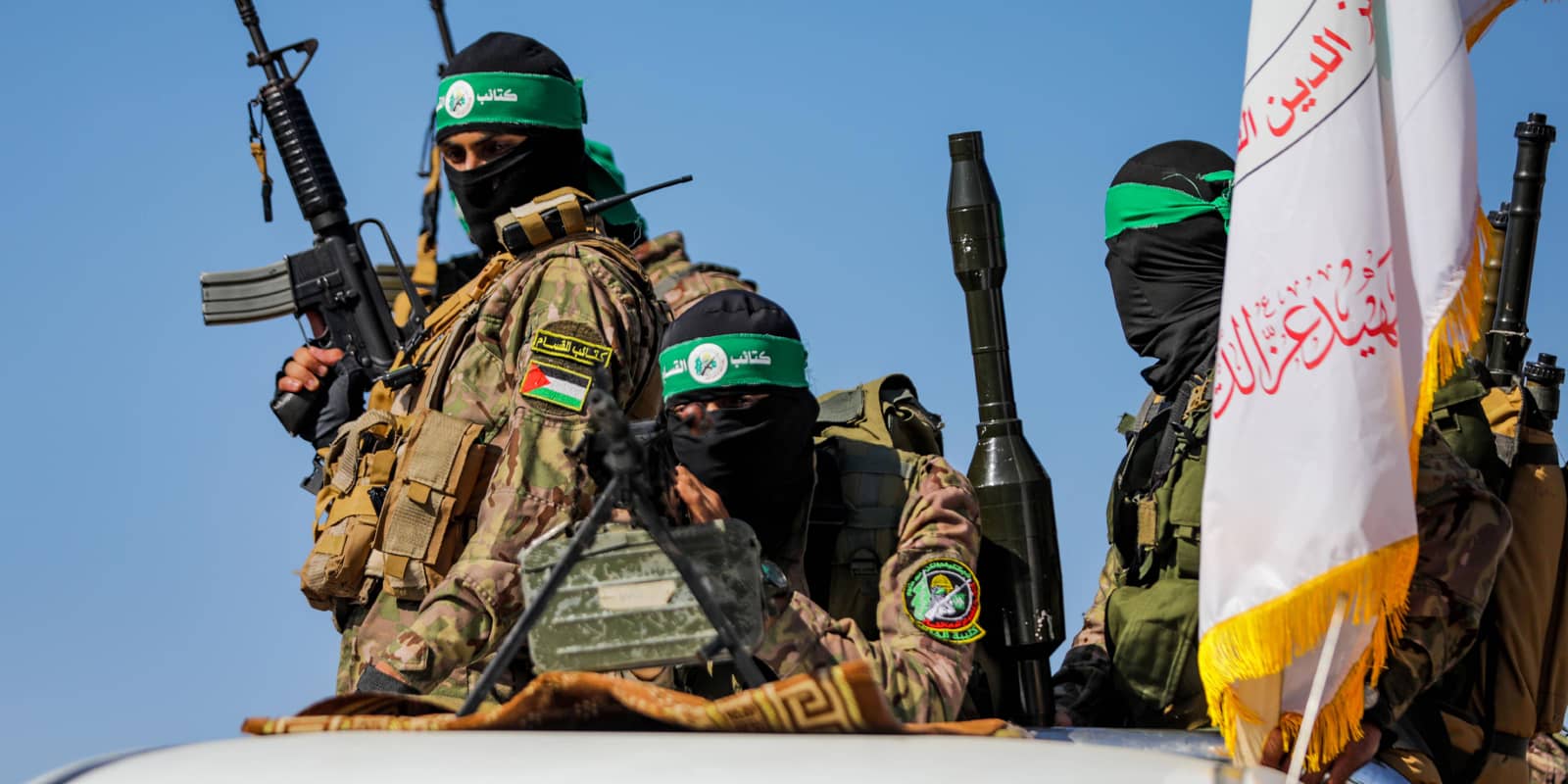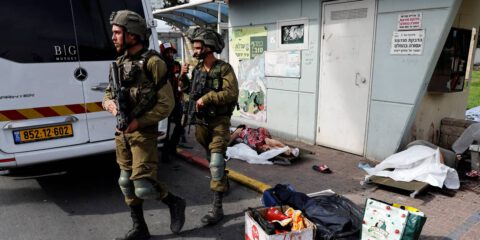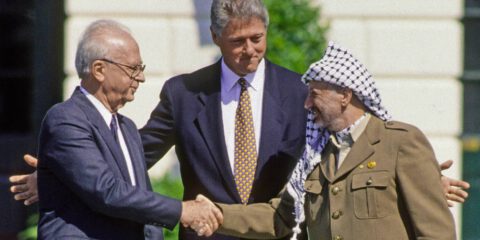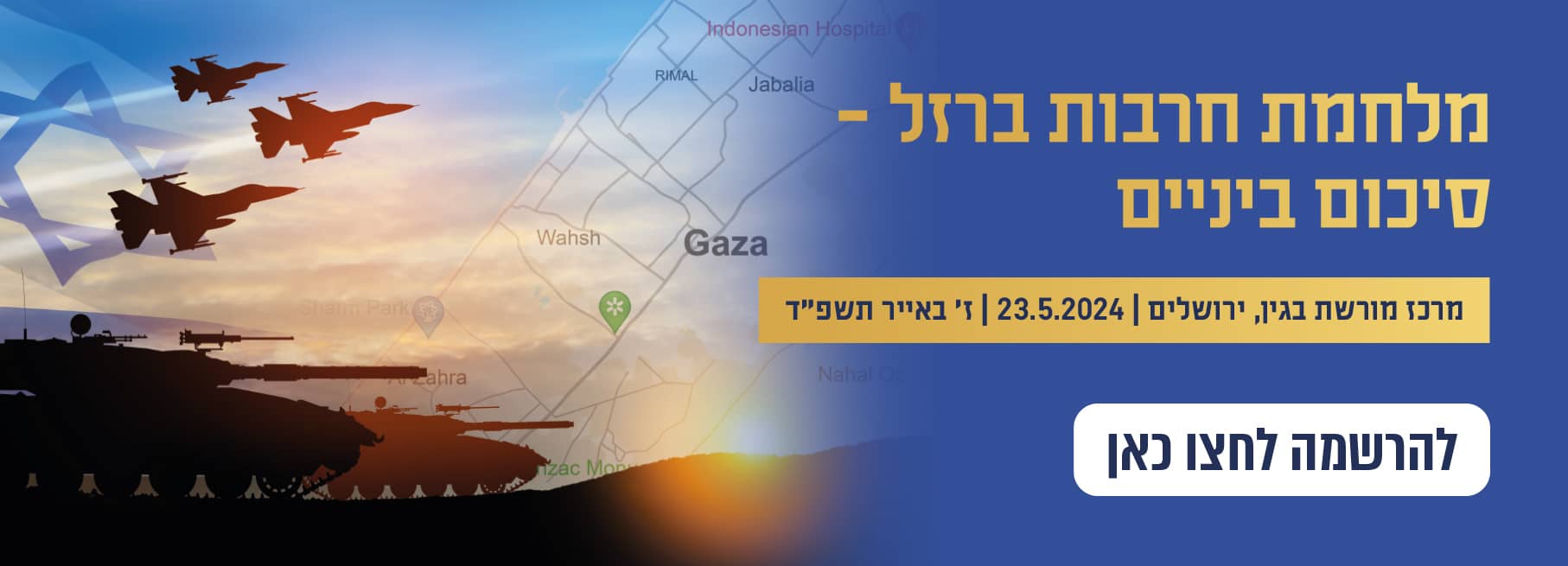As long as it does not launch rockets from Gaza, the immunity granted Hamas from Israeli attacks allows it freedom of action in Samaria, Lebanon, and among Israel’s Arabs.
The series of terror attacks does not stop, and the Palestinian terror campaign that began in March 2022 is expanding and spreading. Hamas claims responsibility for some of the attacks, encourages and assists others with money and weapons, and is not required to pay any cost. Alongside road vehicular attacks, highway shootings, and murdering Jews in Judea, Samaria, and within the State of Israel, Hamas is building capabilities and infrastructure for firing rockets from the Jenin area toward the Gilboa and northern Israel communities. The rockets are still primitive, and all launch attempts have failed. However, the introduction of rockets as part of the weapons depot in Samaria could still develop into a significant threat if not dealt with decisively by Israel.
In addition, a barrage of 34 rockets was fired from Lebanon in early April 2023 by “Palestinian Hamas,” according to the IDF Spokesperson. Needless to say, this shooting passed without any significant Israeli response. In light of these attacks, Hamas activists are calling (September 2023) on Gaza residents to return to participating in protest marches along the border. To help that effort, it has prepared five camps for organizing marches and demonstrations along the border fence with Israel. That increase in activity is because of the economic difficulties and internal pressure that Hamas is under in Gaza and in response to criticism for its non-participation in the armed struggle against Israel, which is being waged only from Judea and Samaria.
The Gaza Strip is the only area where Hamas has tried to maintain relative calm in recent years, in order to receive immunity from Israel’s retaliation. Israel assists Hamas in rehabilitating the Gaza Strip and improving the economic situation (including by allowing 20,000 Palestinians to work in Israel) in return for calm in Gaza. However, under its auspices, Hamas is promoting, without hindrance, its military buildup. That includes testing newer rockets that are more dangerous in their range, accuracy, and warhead. Besides maintaining calm in the Gaza Strip, Hamas is systematically developing and operating the organization’s terrorist infrastructure in Judea and Samaria. Hamas also encourages terrorism by paying money and supplying weapons even to Palestinians who are not members of its ranks.
In addition, the organization operates mainly through Saleh al-Arouri – who lives in Beirut and operates under Hezbollah’s auspices with Iranian encouragement and support – to establish the terrorist infrastructure in southern Lebanon and prepare another active front against Israel. Hamas leadership in Gaza and outside partners are acting together to escalate friction related to the Temple Mount and help infiltrate Israeli Arabs to prepare an internal Israeli front.
Hamas’ actions and intentions are not hidden from view – its leaders openly declare this activity and are proud of it, provoking and threatening Israel, while their level of self-confidence is rising. It is due to their assessment that Israel will not respond to this activity against the organization’s leadership in Gaza or its foreign leadership. As time passes, this assumption of Hamas seems entirely accurate, as Israel allows Hamas a higher degree of freedom. At the same time, at least in the eyes of Hamas and Hezbollah, the Israeli preference is inclusion. In addition, the internal crisis that Israel is experiencing is perceived by Hamas, Hezbollah, and Iran as evidence of Israel’s expected process of disintegration, bringing them closer to a multi-front attack by Israel, which will lead to its collapse.
Hamas’ activity in Lebanon suits all of Israel’s enemies. It serves Hamas because it creates differentiation from the Hamas leadership in Gaza, where quiet is maintained. That is convenient for Hezbollah in Lebanon because this keeps up constant friction with Israel and provides deniability. That is also appropriate for Israel since the lull in the Gaza Strip continues. There is no public pressure to act against Hamas in Gaza, so Israel can invest in preparing for war in the northern arena, build its force for a possible confrontation with Iran, and, in recent months, reinforce troops to confront terror in Judea and Samaria.
Hamas has found an optimal model that relies on five areas of operation that allow it flexibility and maneuver: Gaza, Judea and Samaria, East Jerusalem, Israeli Arabs, and Lebanon, while separating Gaza from the active terrorist arenas, mainly in Judea and Samaria, and Lebanon. The organization concentrates on employing terrorism in Judea and Samaria, which contributes to the destabilization of the Palestinian Authority. The PA finds it difficult to deal with Hamas and dismantle its terrorist infrastructure. Any such effort on its part leads to clashes between the Palestinian security forces and the Palestinian street and cements the perception that it is collaborating with the Israeli occupation. The difficulty of the Palestinian security forces requires Israel to act on its own, in many cases, to thwart terrorism with intensive operational activity, which inevitably increases friction with the Palestinian civilian population and leads to an increase in the number of Palestinian detainees, casualties, and fatalities. This result helps Hamas position itself as the spearhead of the Palestinian ethos of armed resistance.
Hamas’ achievement is threefold: the organization succeeds in nurturing and nurturing the ethos of armed resistance; it leads to a continuous increase in the scope of terrorist activity against Israel; and at the same time, Hamas succeeds in undermining the status of the Palestinian Authority, strengthening it at its expense, and being built as a legitimate alternative government in the eyes of the Palestinian public.
Hamas, supported by Iran and its Hezbollah affiliate, is unlike the Iranian-backed Palestinian Islamic Jihad, which totally depends on Iran. Unlike Hamas, it does not see itself as a governmental alternative to the Palestinian Authority or feel obligated or responsible toward the local population. Its entire essence is as a terrorist organization, and its right to exist is the armed struggle against Israel. Hamas is not only a terror organization but an ideological, political, and social movement with aspirations to lead the Palestinian national movement and control the Palestinian Authority. It has a clear agenda, and its hold on the ground is much more significant, especially since it is the sovereign in Gaza.
Although Hamas can exist and continue to operate without Iranian support, the rapprochement between the organization’s foreign leadership, led by al-Arouri and Ismail Haniyeh, and al-Arouri’s stay in Beirut under Nasrallah’s aegis and shadow, makes Hamas a more significant and complex threat. It is no longer an entity confined to Gaza alone. Its presence and influence in other spheres and the depth of cooperation with Iran and Hezbollah make Hamas a more dangerous adversary. Any confrontation with Hamas may lead to a multi-front war.
Hamas, Hezbollah, and Iran understand this and thus continue to nurture Hamas. At the same time, Israel is mired in domestic problems, its army and military are perceived as weakened, and its government is seen as having limited freedom of action. This puzzle serves the organizing idea of a war of attrition against Israel, based on its perception in the eyes of the resistance axis as a hedonistic Western society with little endurance. Therefore, the puzzle, which serves the logic of attrition and the ability to operate from several fronts, becomes a strategic challenge with an exceptionally high potential for volatility and risk.
This assessment requires an Israeli change vis-à-vis Gaza. Preserving Hamas’ power in Gaza as a necessary component in separating the Gaza Strip, Judea and Samaria, and the Palestinian Authority was, for many years, in Israel’s interest. The premise of the separation concept was to limit Hamas’ influence on the area of Gaza and to create greater political room for maneuver vis-à-vis the Palestinian Authority. In this situation, it is unlikely that Israel will pay the full price for an agreement with half the Palestinian people or a Palestinian state in which a rebel area endangers the future Palestinian state. However, it seems that the separation policy has exhausted its purpose. The price that Israeli citizens are paying for the series of terror attacks and escalation in Judea and Samaria is too high while Hamas becomes a central axis in a multi-front campaign against Israel. It becomes a strategic threat. Jerusalem can no longer accept the existing equation with Hamas and must act quickly to change it.
Hamas has become a dangerous strategic challenge for Israel due to its military capabilities in Gaza. Military force is the basis of its political power, which enables it to act in the spirit of the characteristics mentioned above, position itself as an alternative to the Palestinian Authority, and become an essential Iranian asset as part of Tehran’s effort to establish several active fronts against Israel, whether for attrition or to prepare for a future attack from all fronts simultaneously. Hamas is a dangerous enemy that challenges Israel, erodes its deterrence, and entrenches the war of attrition of terrorism.
Israel’s clear interest is to significantly weaken Hamas and the other organizations in Gaza. That can only be done by severely damaging the organization’s military force. Such damage would weaken Hamas in Judea and Samaria and, at the same time, weaken Iran and its influence in the Palestinian arena, which relies on the action of proxies under its direction. Cutting off, even temporarily, the Iranian stronghold in the Palestinian arena and weakening Iran’s influence could be an achievement for Israel while also sending a threatening message to Hezbollah.
Weakening Hamas serves two strategic interests: weakening Iran and its involvement in the Palestinian arena and strengthening the Palestinian Authority to be a stable and functioning authority defined by the Israeli government (like its predecessors) as a vital Israeli interest. Israel must enlist partners and legitimacy for a decisive action against Hamas’ center of gravity in Gaza. Thus, and only then, will it embark on a military campaign that will enable the realization of Israel’s strategic goals.
JISS Policy Papers are published through the generosity of the Greg Rosshandler Family.
Photo: IMAGO / ZUMA Wire / Yousef Mohammed









 - בניית אתרים
- בניית אתרים